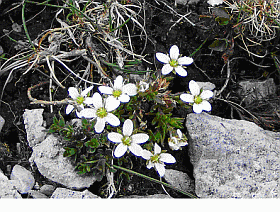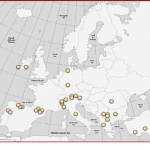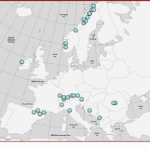
Project Background
The Irish arctic-alpine flora consists of a rare and fragmented group of plants, some of which have disjunct populations distributed around Europe. According to conventional theory of plant immigration to Ireland, species colonized the island at the end of the Pleistocene glaciation via a landbridge across the Irish Sea from Britain. Some Irish plant species however do not exist in Britain and in the case of the red data species Arenaria ciliata and Minuartia recurva, these have their closest neighbour populations respectively in the Jura Mountains and in Portugal (Webb, 1983).
Project Aims
- To determine postglacial migration routes in Ireland for the species A. ciliata and M. recurva which will be tested using a comparative phylogeographical analysis including a range of Caryophyllaceae (Arenaria norvegica, Silene acaulis, Minuartia verna, M. rubella, M. sedoides and Arenaria serpyllifolia).
- To ascertain (i) the genotype of each individual using AFLP and cpDNA markers, and (ii) the genetic diversity of each population.
- To complete an accurate distribution record of the two Irish red data target species and establish the genetic vitality and viability of the individual Irish populations, compared to their European counterparts. Seed material will be collected from the wild populations and cultivated in the Botanic Gardens.
Project Staff and Partners
Conor Meade and Colin Kelleher act as joint supervisors of the project. The project is funded by the Science Foundation Ireland.
- Distribution of Minuartia recurva in Europe
- Distribution of Arenaria ciliata in Europe


